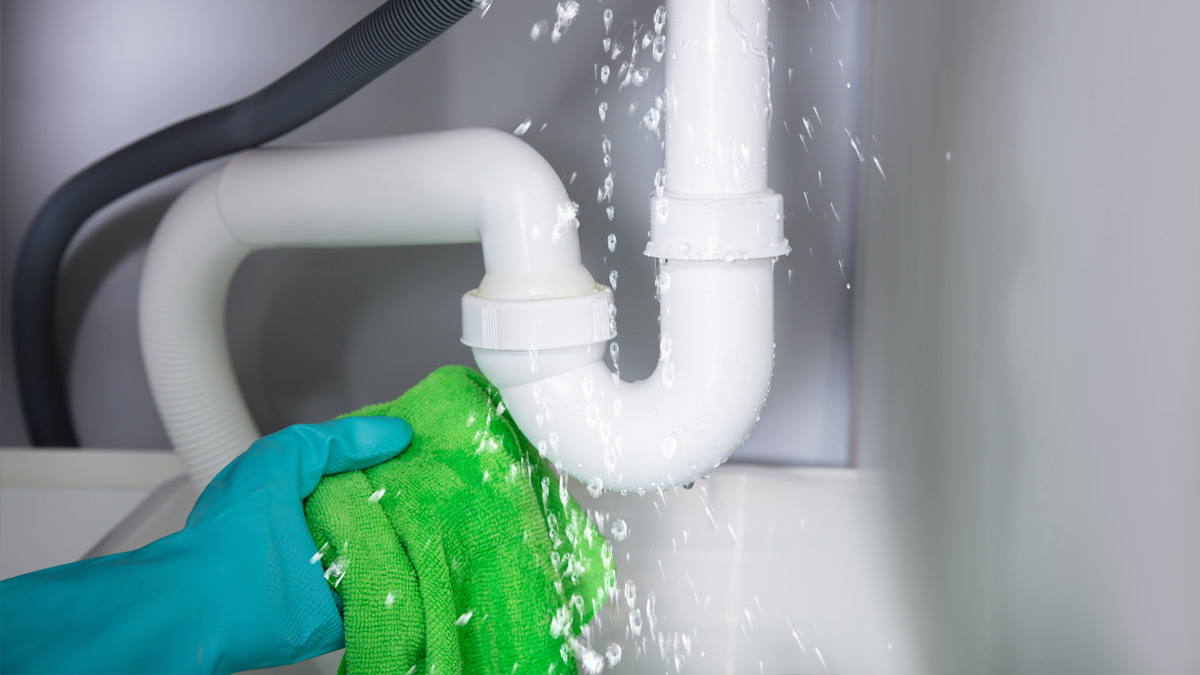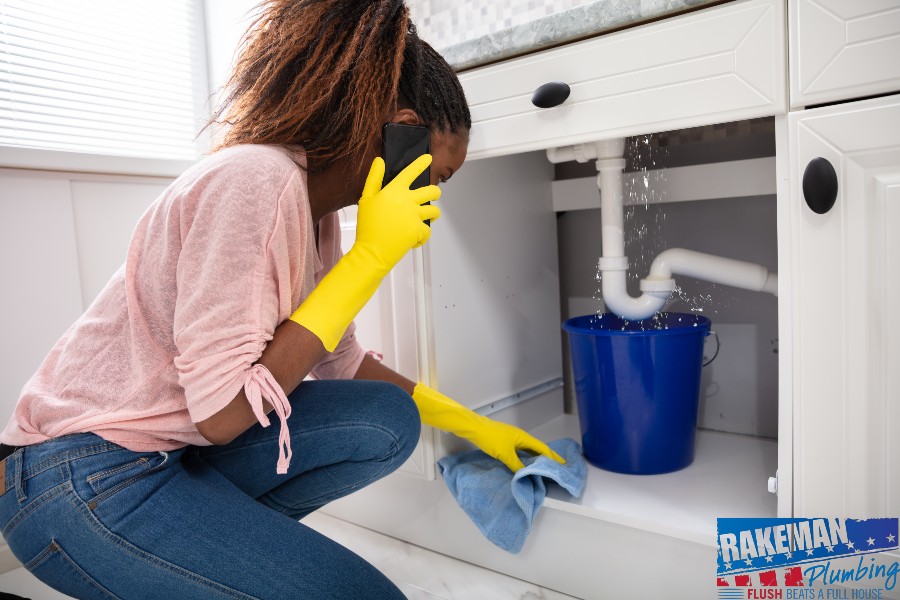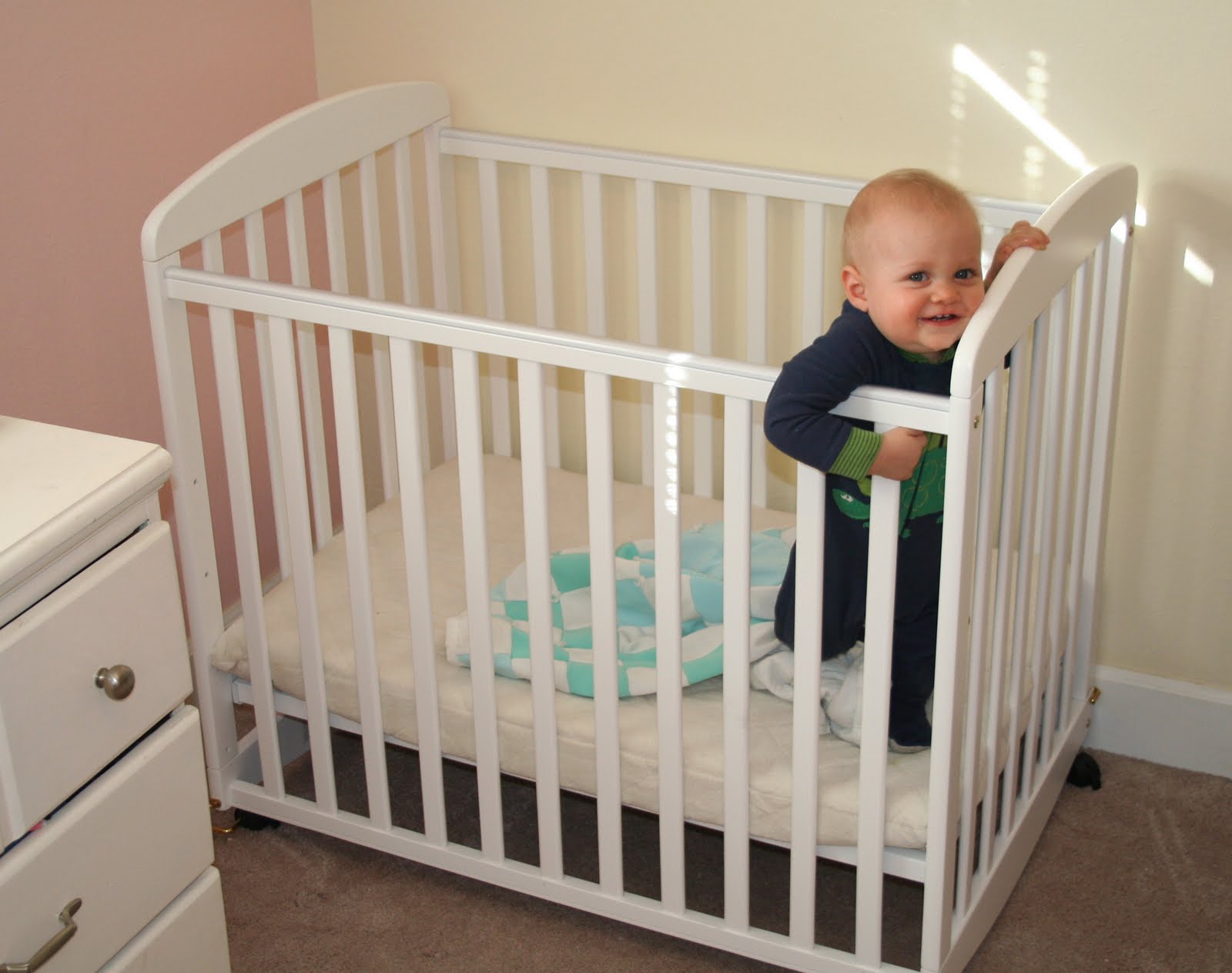Fixing a Leak Under the Bathroom Sink
If you've noticed a pool of water forming under your bathroom sink, you may have a leak. Not only is this a nuisance, but it can also lead to water damage and mold growth if left unchecked. Don't panic, though. With a little know-how and some basic tools, you can easily fix the problem yourself. Follow these steps to repair a leak under your bathroom sink and prevent any further damage.
How to Repair a Leaky Bathroom Sink
Before you start the repair, it's important to identify the source of the leak. In most cases, the leak will be coming from the cold water line. This is the pipe that supplies water to your faucet. Here's how you can fix it:
Step 1: Turn off the water supply to your sink. This can usually be done by turning the shut-off valve located under the sink in a clockwise direction.
Step 2: Place a bucket or towel under the pipes to catch any water that may still be in the line.
Step 3: Use a wrench to loosen the nut that connects the cold water line to the faucet. You may need to hold the line in place with another wrench while you loosen the nut.
Step 4: Once the nut is loose, carefully remove the cold water line from the faucet.
Step 5: Check the rubber washer inside the cold water line. If it is cracked or worn, replace it with a new one.
Step 6: Reattach the cold water line to the faucet and tighten the nut with a wrench.
Step 7: Turn the water supply back on and check for any leaks. If the leak persists, you may need to replace the cold water line completely.
DIY Guide for Fixing a Leaking Bathroom Sink
If you're feeling confident in your DIY skills, you can also try fixing the leak under your bathroom sink using some household items. Here's a quick guide to help you out:
Step 1: Turn off the water supply to your sink.
Step 2: Use a small brush or toothbrush to clean the area around the leak. This will help the sealant stick better.
Step 3: Apply a small amount of silicone sealant around the leak, making sure to cover the entire area.
Step 4: Let the sealant dry completely before turning the water supply back on.
Step 5: Check for any leaks and repeat the process if necessary.
Common Causes of a Bathroom Sink Leak
Now that you know how to fix a leak under your bathroom sink, it's important to also understand what may have caused the leak in the first place. Here are some common reasons why your bathroom sink may be leaking:
Worn Out Washers: Over time, the rubber washers inside the pipes can wear out and cause leaks.
Loose Connections: If the connections between the pipes are loose, they can lead to leaks.
Cracked Pipes: Extreme temperatures or old age can cause pipes to crack and leak.
High Water Pressure: If your water pressure is too high, it can put strain on the pipes and cause leaks.
Steps to Stop a Cold Water Leak Under the Bathroom Sink
If you're dealing with a cold water leak under your bathroom sink, here are the steps you can take to stop it:
Step 1: Turn off the water supply to your sink.
Step 2: Place a bucket or towel under the pipes to catch any water that may still be in the line.
Step 3: Use a wrench to tighten any loose connections in the cold water line.
Step 4: Check the pipes for any cracks or damage and replace them if necessary.
Step 5: Turn the water supply back on and check for any leaks. If the leak persists, you may need to call a professional plumber.
Quick and Easy Solutions for a Leaking Bathroom Sink
Fixing a leak under your bathroom sink doesn't always have to be a complicated process. If the leak is minor, here are some quick and easy solutions you can try:
Use Teflon tape: If the leak is coming from the threaded connections, wrapping some Teflon tape around the threads can help create a tighter seal.
Apply pipe sealant: Similar to silicone sealant, pipe sealant can be applied around the leak to seal it up.
Use a leak repair kit: These kits contain everything you need to fix a leaky pipe, including rubber patches and adhesive.
Preventing and Fixing a Cold Water Leak Under the Bathroom Sink
The best way to deal with a leak under your bathroom sink is to prevent it from happening in the first place. Here are some tips to help you keep your pipes in good condition:
Regularly check for leaks: Make it a habit to check under your sink for any signs of leaks, and address them immediately.
Don't over-tighten connections: While loose connections can cause leaks, over-tightening them can also cause damage. Use a wrench to tighten them just enough to create a seal.
Insulate your pipes: This is especially important if you live in an area with freezing temperatures. Insulating your pipes can prevent them from cracking and causing leaks.
Troubleshooting a Leaky Bathroom Sink
If you've followed all the steps to fix a leak under your bathroom sink and the problem persists, it may be time to call a professional plumber. They will be able to identify the root cause of the leak and provide a long-term solution.
Additionally, if you notice any other plumbing issues or suspect any damage to your pipes, it's best to seek professional help to avoid any further complications.
How to Detect and Fix a Cold Water Leak Under the Bathroom Sink
While a leak under your bathroom sink may be easy to spot, some leaks can go undetected for a long time. Here are some signs that you may have a cold water leak under your sink:
Mold or mildew growth: If you notice any musty smells or black spots around your sink, it could be a sign of a hidden leak.
Low water pressure: If you suddenly notice a decrease in your water pressure, it could be due to a leak in your pipes.
Increased water bill: A hidden leak can also cause your water bill to spike without any apparent increase in water usage.
If you suspect a cold water leak under your bathroom sink, follow the steps mentioned earlier to fix it. If the leak is not visible, you may need to call a professional plumber to locate and repair it.
Expert Tips for Repairing a Leaking Bathroom Sink
Here are some additional tips from plumbing experts to help you with your bathroom sink leak repair:
Use plumber's putty: Plumber's putty is a versatile and durable sealant that can be used to fix leaks in your sink or around your pipes.
Replace old pipes: If you have older pipes that are prone to leaks, consider replacing them with newer, more durable ones.
Call a professional: If you're not confident in your DIY skills or the leak is too complicated to fix on your own, don't hesitate to call a professional plumber for help.
In conclusion, a leak under your bathroom sink is a common plumbing issue that can be easily fixed with the right tools and knowledge. With regular maintenance and proper repairs, you can prevent any further leaks and keep your bathroom sink in good condition for years to come.
The Importance of Addressing a Leak Under Your Bathroom Sink: A Guide to House Design

Understanding the Issue
 When it comes to house design, one of the most common and frustrating issues that homeowners face is a leak under their bathroom sink. This may seem like a minor problem, but if left untreated, it can lead to bigger and more expensive issues in the future. But why does this happen in the first place?
Poor Installation:
In some cases, the leak may be due to a faulty installation of the sink or its plumbing. This could be a result of DIY projects or hiring inexperienced contractors.
Worn Out Parts:
Over time, the pipes and fittings under your sink can deteriorate due to wear and tear. This can result in cracks, holes, or loose connections, causing water to leak out.
High Water Pressure:
If your home has high water pressure, it can put added stress on your pipes and cause them to leak.
When it comes to house design, one of the most common and frustrating issues that homeowners face is a leak under their bathroom sink. This may seem like a minor problem, but if left untreated, it can lead to bigger and more expensive issues in the future. But why does this happen in the first place?
Poor Installation:
In some cases, the leak may be due to a faulty installation of the sink or its plumbing. This could be a result of DIY projects or hiring inexperienced contractors.
Worn Out Parts:
Over time, the pipes and fittings under your sink can deteriorate due to wear and tear. This can result in cracks, holes, or loose connections, causing water to leak out.
High Water Pressure:
If your home has high water pressure, it can put added stress on your pipes and cause them to leak.
The Risks of Ignoring a Leak
 Ignoring a leak under your bathroom sink may seem tempting, especially if it seems minor or if you're on a tight budget. However, this can lead to more serious consequences in the long run.
Structural Damage:
Constant leaking can cause water damage to the walls, floors, and cabinets under your sink. This can weaken the structure of your home and be a safety hazard.
Mold and Mildew:
The constant presence of water can create the perfect breeding ground for mold and mildew. This not only leads to an unpleasant odor but can also cause health issues for you and your family.
Increased Water Bills:
A leaky faucet or pipe can result in a significant increase in your water bills. This can put a strain on your budget and lead to unnecessary expenses.
Ignoring a leak under your bathroom sink may seem tempting, especially if it seems minor or if you're on a tight budget. However, this can lead to more serious consequences in the long run.
Structural Damage:
Constant leaking can cause water damage to the walls, floors, and cabinets under your sink. This can weaken the structure of your home and be a safety hazard.
Mold and Mildew:
The constant presence of water can create the perfect breeding ground for mold and mildew. This not only leads to an unpleasant odor but can also cause health issues for you and your family.
Increased Water Bills:
A leaky faucet or pipe can result in a significant increase in your water bills. This can put a strain on your budget and lead to unnecessary expenses.
Addressing the Issue
 Fortunately, fixing a leak under your bathroom sink is a relatively simple and affordable task. It's best to hire a professional plumber to properly assess and address the issue. They will be able to determine the root cause of the leak and provide a long-term solution.
In some cases, a simple tightening of loose connections or replacing worn-out parts may do the trick. However, if the issue is due to poor installation, it may require a complete reinstallation of the sink and its plumbing.
Fortunately, fixing a leak under your bathroom sink is a relatively simple and affordable task. It's best to hire a professional plumber to properly assess and address the issue. They will be able to determine the root cause of the leak and provide a long-term solution.
In some cases, a simple tightening of loose connections or replacing worn-out parts may do the trick. However, if the issue is due to poor installation, it may require a complete reinstallation of the sink and its plumbing.
Preventing Future Leaks
 To avoid dealing with a leak under your bathroom sink in the future, it's important to take preventive measures. This includes regular maintenance and inspections of your plumbing, as well as being mindful of what you put down your sink drain. Avoid dumping grease, hair, and other debris that can clog your pipes and cause leaks.
In conclusion, a leak under your bathroom sink may seem like a minor inconvenience, but it's one that should not be ignored. By understanding the issue, addressing it promptly, and taking preventive measures, you can ensure a well-designed and functional bathroom for years to come.
To avoid dealing with a leak under your bathroom sink in the future, it's important to take preventive measures. This includes regular maintenance and inspections of your plumbing, as well as being mindful of what you put down your sink drain. Avoid dumping grease, hair, and other debris that can clog your pipes and cause leaks.
In conclusion, a leak under your bathroom sink may seem like a minor inconvenience, but it's one that should not be ignored. By understanding the issue, addressing it promptly, and taking preventive measures, you can ensure a well-designed and functional bathroom for years to come.























































:max_bytes(150000):strip_icc()/what-is-under-the-bathroom-sink-3973574-03-c2c800c743054899aca9bdcc0535db34.jpg)






:max_bytes(150000):strip_icc()/Leakingpipe-GettyImages-921346082-fb92dca8462e4f70a93b42b5ecd4913a.jpg)















